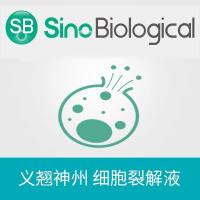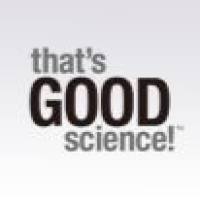Activation of SAPKs/JNKs and p38s In Vitro
互联网
|
Stimulus (ref.) |
Target kinase(s) |
Sensitive cell lines |
Amount used |
Comments |
|---|---|---|---|---|
|
Anisomycin (6 ) |
SAPK/JNK, p38 |
All cells |
1–10 μg/mL, 1–60 min |
|
|
UV-C (12 ) |
SAPK/JNK, p38 |
All adherent cells |
40 J/m2 , 20 s-1 |
Drain medium from cells, and wash with PBS before exposure. |
|
γ Radiation (13 ) |
SAPK/JNK, p38 |
All cells (see comments) |
10–20 gy, 137Cs source at 0.76 gy/min |
This is controversial and has not been replicated in some laboratories. After treatment, wait between 20 min and 4 h before harvest. |
|
cis platinum (CDDP) or cytosine arabinoside (ara-C) (13 ) |
SAPK/JNK, p38 |
All cells |
50–300 μM , 2–6 h |
|
|
Methyl methane sulfonate (MMS) (13 ) |
SAPK/JNK, p38 |
All cells |
1 mM , 3 h |
|
|
Oxidant stress (H2 O2 )(9 ) |
SAPK/JNK, p38 |
All cells |
2–20 mM , 2–60 min |
|
|
TNF (6 ) |
SAPK/JNK, p38 |
HepG2, CCD18-CO, HEK293, COS, U937, HL-60, Jurkat, L929, HeLa, primary thymocytes or hepatocytes |
2–100 ng/mL, 1–60 min |
Try to pick a cell type in which TNF is known to induce a biologic effect. |
|
IL-1 (6 ) |
SAPK/JNK, p38 |
EL-4, HepG2, Jurkat, HL-60, KB |
2–100 ng/mL, 1–60 min |
Try to pick a cell type in which IL-is known to induce a biologic effect. |
|
Endothelin (14 , 15 ) |
SAPK/JNK, p38 |
Endothelial, mesangial, pulmonary fibroblast, vascular smooth muscle, cardiomyocyte |
10–200 nM , 2–60 min |
Try to pick a cell type in which endothelin is known to induce a biologic effect. |
|
Angiotensin II (14 ) |
SAPK/JNK |
Endothelial, mesangial, pulmonary fibroblast, vascular smooth muscle, cardiomyocyte, |
20–500 nM , 2–60 min |
Try to pick a cell type in which the type II antiotensin II receptor is expressed and in which angiotensin II is known to induce a biologic effect. |
|
Ischemia/reperfusion (16 ) |
SAPK/JNK, p38 |
Kidney, heart, brain |
40 min ischemia, 2–120 min reperfusion |
SAPK/JNK is activated only during reperfusion. |









